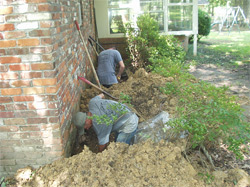Torque wrenches are available in a number of different styles but they all are used for a single purpose. In many cases it is necessary to tighten a bolt or nut to a specific tension or torque. This is an important consideration in situations where there are multiple fasteners used at a single joint and extreme tolerance must be observed. Depending on the situation, the location and the size of the fasteners involved, there are manual, pneumatic and DC torque tools.
Any torque wrench is designed to be pre-set with the design torque, as the wrench continues to apply tension to the fastener it continues to tighten until the torque limit has been reached at which time it slips and no further torque can be applied.
Perhaps the simplest type is what is called a “beam” type torque wrench. This device is so rudimentary that it does not have a mechanism to indicate that the torque limit has been reached; it simply has a scale with a pointer. As the workman tightens the fastener, it is his responsibility to watch the torque buildup on the scale and stop at the proper limit. These devices are OK for general purposes but as they take human intervention, the degree of accuracy can often be questioned; this is not the case when DC torque tools are employed.
There are many applications where the torque applied to the fasteners must be in accordance with an engineering specification for both the torque setting and the pattern of tightening the bolts. An application that most would be aware of is when the cylinder head of a car engine has been removed. When the head is being replaced, the bolts, of which there are perhaps a dozen have to be tightened in a specific sequence and to a specific torque otherwise there is the distinct possibility that the head and block mating surfaces will not be perfect. This is also true in bridge construction where large beams are fastened to one another using multiple nuts and bolts; they too must be tightened properly.
For heavy duty work or for work which is done repetitively, torque wrenches can be powered by pneumatics or electricity. In many cases when the work is on site, DC torque tools are used.


